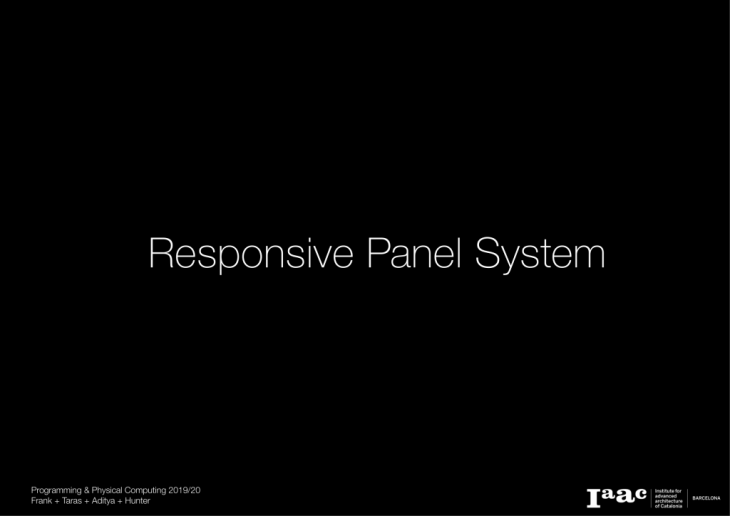
In this modern era, our lives are diverged into the physical and the digital. Our project aims to bridge the pair together by creating an interactive facade. The system allows for the control of external reaction based on light and temperature. Through the use of multiple sensors, the facade will react by initiating a simple dialogue between the environment and machine. RPS is a fully functional system that is modular. It aims to operate on data synchronicity and reacts to find the most optimal settings.
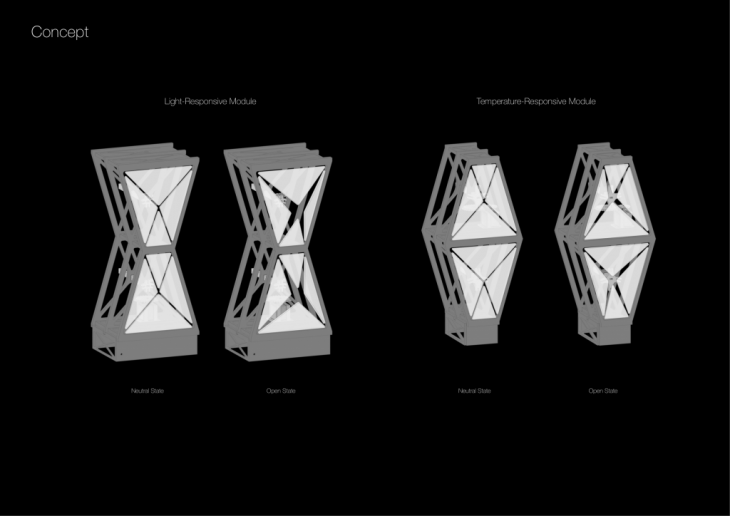
Two outer modules will react to light, while one inner module will react to temperature. The outer modules will open its facade outwards and the inner modules will reverse that action. This allows for the most optimal aperture for both systems.
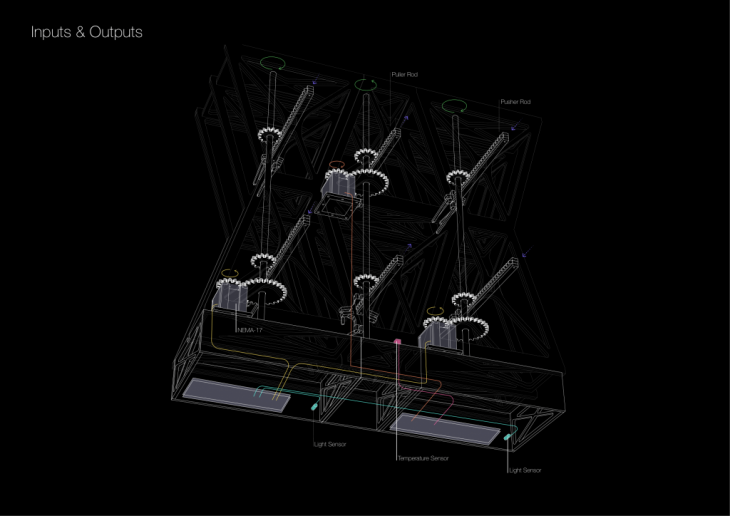
RPS is simple in materiality, but complex in joinery. The body of RPS is made from laser cut plywood and the operable system is made from laser cut acrylic. RPS is controlled by light and temperature sensors. The gear system is then connect to a stepper motor in which we coded to optimize its start and end position. One stepper motor is able to control one module through the use of a square rod. Two gears are attached to the square rod and they are then connected to a horizontal rail that will either push or pull the flaps.
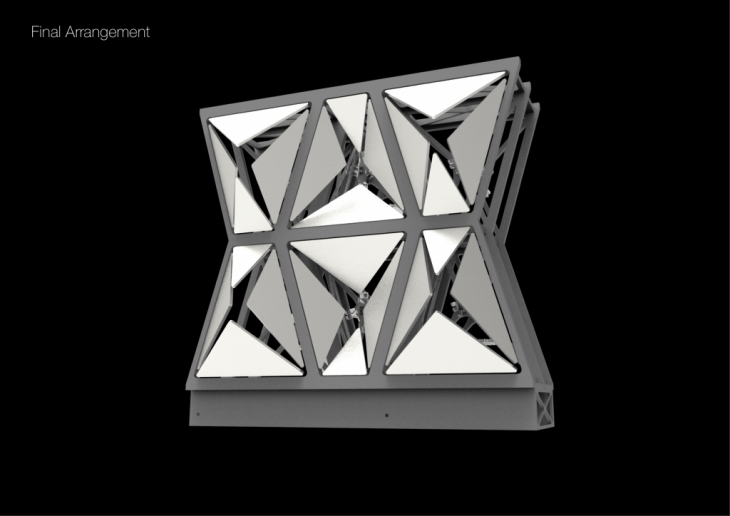
The reaction of the sensors allows for the movement of the facade. The light sensor adjusts to give the most optimal light – if it is too dark it will adjust to find the most efficient amount based on data. The temperature also will react similarly in which it will find the most optimal temperature for balance. 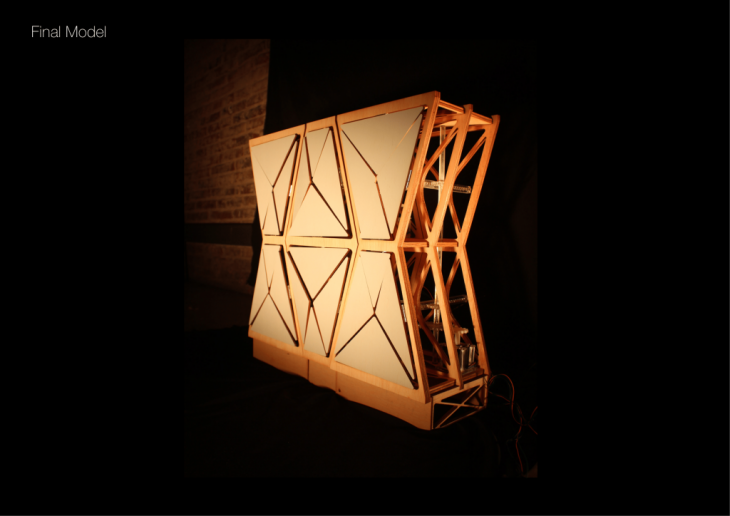
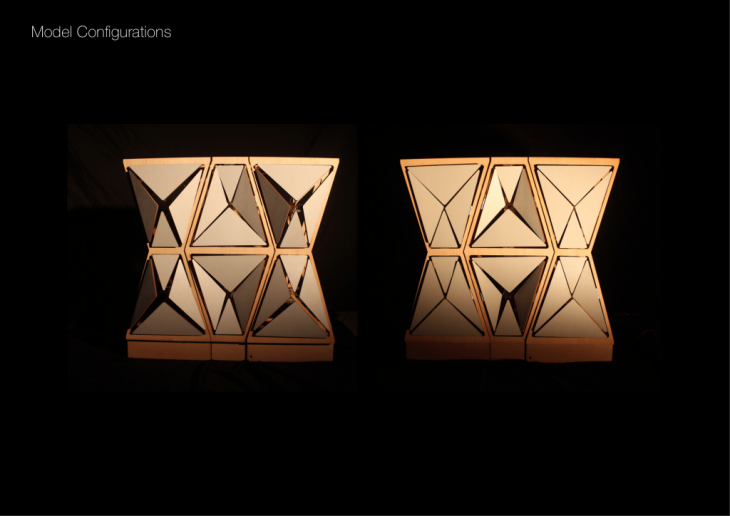
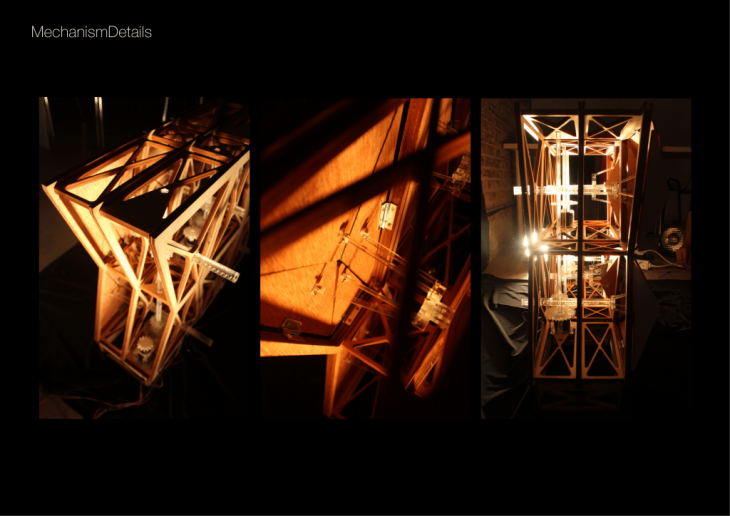
RPS Facade is a project of IaaC, Institute for Advanced Architecture of Catalonia developed at MAA01 in 2019-20 by: